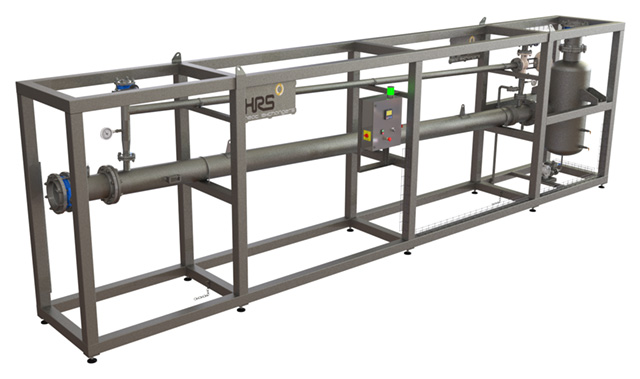
The majority of the UK’s sewage AD sites generate electricity using combined heat and power (CHP) plants. If a plant is to be commercially successful, then it is crucial that each part of the process is optimised. For example, an inefficient CHP engine will result in lower electrical output: a 1 MW digester operating at even 80% capacity could be losing as much as £16,000 each month.
An often-overlooked area is ensuring that any water present in the raw biogas is removed; if water enters a CHP engine it can decrease its efficiency, resulting in reduced biogas yields and engine damage. The Biogas Dehumidification System (BDS) from HRS Heat Exchangers removes water from biogas, protecting CHP engines from corrosion and cavitation. It also comes with a heat recovery section as standard, increasing an AD plant’s overall energy efficiency.
“The BDS reduces biogas temperatures from around 40ºC to approximately 5-7ºC, condensing more than 90% of the water volume,” explains
HRS international sales and marketing director Matt Hale. “It works via a chiller system which supplies a coolant that is transferred to heat exchangers. Biogas flows on the product side of the exchanger, while the coolant flows on the service side. As the biogas cools, the water condenses from the gas, leaving a clean and dry biogas ideal for use in CHP engines.”
The HRS BDS also includes heat recovery, with the cooled biogas used to pre-cool any incoming biogas, recovering as much as 20% of the energy needed for the process.
Hale adds, “With a CHP engine being one of the most expensive pieces of equipment on an AD plant, protecting it makes good business sense. By removing water from biogas before it enters a CHP engine, the HRS BDS helps to extend an engine’s lifespan, protecting it against corrosion and cavitation.”

